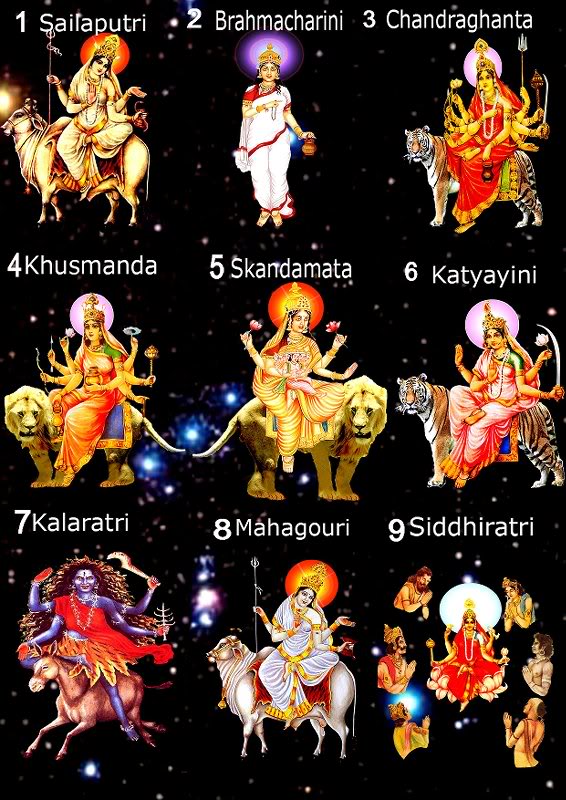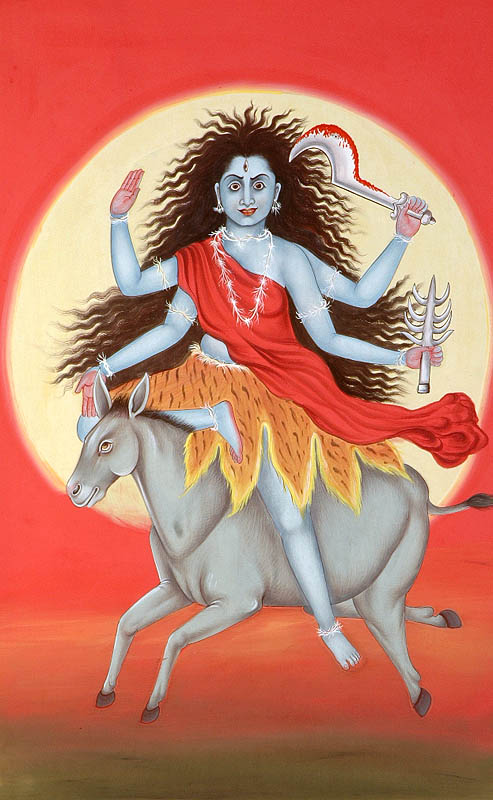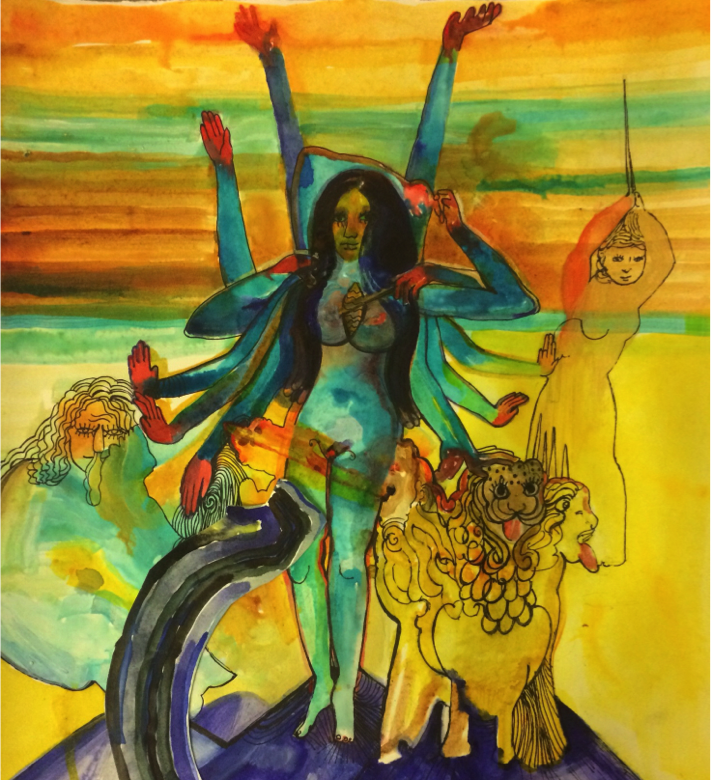Someone on Facebook recently posted this image of the Hindu goddess Kalaratri, the fiercest version or aspect of Kali-Durga, consort of Shiva, I believe (Hindu mythology makes me dizzy), and I became very intrigued. According to asianart.org, “Durga appeared when the gods were unable to subdue a demon who was threatening the entire world. Individually, the gods were unable to defeat the demon. They summoned Durga and gave her all their weapons. The battle went on and on, prolonged by the fact that Mahisha [demons] continually changed shapes.” And of course, she triumphs. Durga apparently has eight other manifestations as well:
Kalaratri is typically represented by cascades of black hair lit by the stars, dark/blue skin, and four hands: two in the mudras of giving, the others clutching a cleaver and torch, respectively. She’s also usually on a horse. She’s celebrated on the seventh day of the festival Navaratri, as the image above relates, and sometimes bears Kali’s bloody tongue:
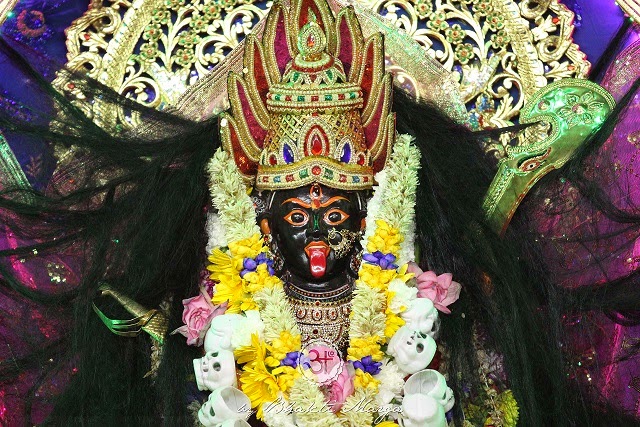
For me, she embodies the necessity of a mother-warrior archetype for which there are few western parallels. Some in Greco-Roman and Euro-pagan traditions, but none in the Judeo-Christian. The idea of a fearsome female deity who could be both destroyer and savior, capable of subduing evil while sustaining life, is obviously just too complicated and threatening for patriachs;). Polytheistic belief systems are always more egalitarian that-a-ways as there’s room for variety and permutation built in. Anyway, I’ve always found Durga inspiring, and this version of her, Kalaratri, was new for me, so I thought I’d share. BTW, I could find no other representation of her similar to the first one I posted, which a friend suggested may be part of a deck of cards (there is no information online).
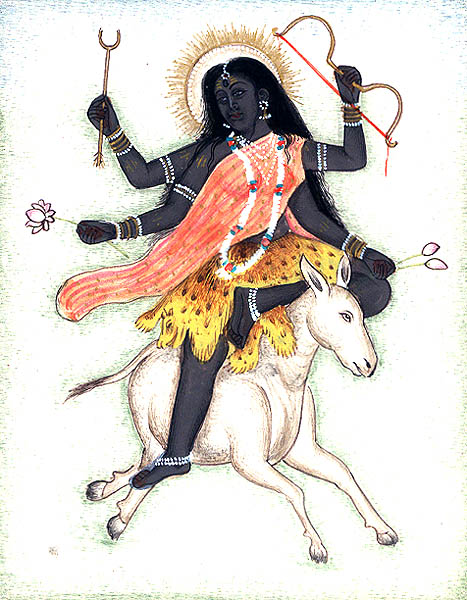
For more info on Kalartri, go here. And if you have time, and want to explore more, I highly recommend checking out my friend Liz Insogna’s amazing project, Goddess, Speak; a series of invocations, writing, art and audio interviews. Through cross-cultural studies of the goddess, she creates vivid and introspective portraits that are truly divine.
Liz Insogna,The Chinnamasta, ink on paper, 2014


